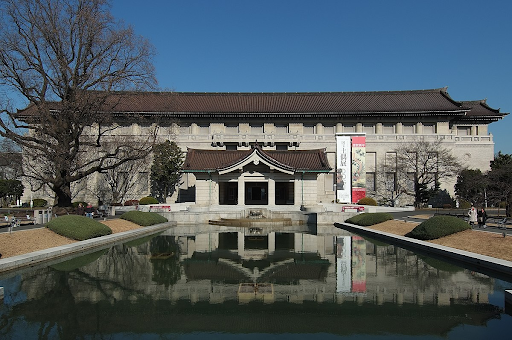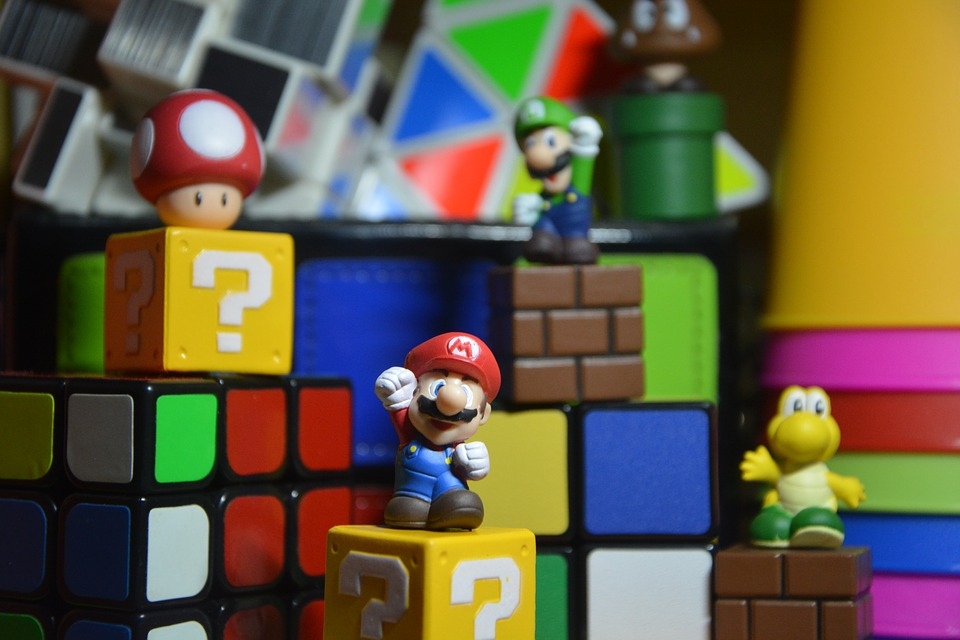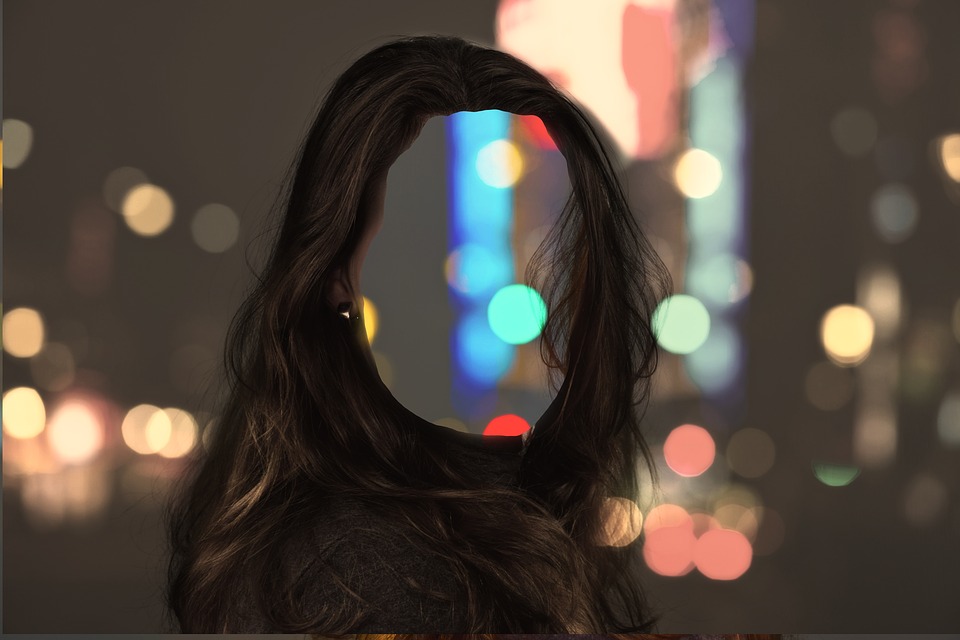Ghosts, apparitions, monsters, gnomes, wraith, doppelgangers, demons, spirits and fiends - all cause a feeling of both dread and fascination. The paranormal is a great question to science that something is beyond the scientific explanation.
Cases of ghost encounters have been circulating around the internet and one such example was the case of a guard who heard a slamming door in the stadium’s ground floor. When he proceeded to investigate while videoing through a smartphone, he found the door slamming by itself and when he approached the animated door, it suddenly stopped. No one is behind the door. He turned around but there was none. What he didn’t know was that a formless shadow rushed and exited through the door and that shadow was only revealed to him in the video. Definitely, something not human must have been haunting the stadium.
Such otherworldly beings have been part of Japanese culture and tradition, as Japanese people believe in spirits, strange apparition, monsters and demons that they call as Yokai. Japan ranks among the top 10 countries with the highest number of paranormal places and sightings. This country ranking is echoed by Paranormal Ranking Index. The country tops the most number of mythical creatures to tell (either legends or sightings). These lists are intended not as an exhaustive list as there are hundreds or more Yokai in Japanese folklore and mythology.
-
Kappa
Kappa resembles a hybrid of a monkey and a turtle. In Japanese, Kappa is a portmanteau of kawa (river) and warawa (child) - meaning river child. He has webbed feet, extendable arms and legs that can stretch longer than a human. Kappa appears as humanoid and lurks underwater. According to the folklore, their behaviour ranges from being mischievous to a malevolent creature. The tale about Kappas is so popular that there are signboards near lakes and streams in Japan that warn people of the dangers of getting too close or planning to swim.
According to legend, they don’t go after people just for the sake of drowning their human victims but rather they want the Shirikodama or a ball found in the anus. Such ball is said to be the human soul.
Kappas can be found as statues in shops, in Sogenji Temple, Asakusa, Tokyo and as cute mascots and vases. They are even stamped in buns as adorable characters.
Defending against Kappas
-
You have to challenge kappas in a sumo match as the monster likes sumo wrestling. Since Kappa is very polite, it will bow after you bow. When the water spills out of its head, the kappa becomes powerless.
-
You have to eat foods disliked by kappas such as ginger, gourds and sesame seed.
-
Hanako-san
Description and Legend
Hanako-san is the ghost of a young girl. She haunts a girl’s bathroom and appears as a white-skinned and pale girl who wears a red skirt. She has an old-style hair. Legend says that Hanako-san was a former normal girl who played hide and seek during World War II. While she was crouching and waiting for other players, planes came and bombed her school. Another story told that she was a victim of bullying and she committed suicide because of intense bullying from her classmates. The third story described the girl’s mysterious fate - she fell out of the library window.
Behaviour
Hanako-San lies in waiting on the third floor of a girl's bathroom and reveals herself once summoned. When a student enters the third-floor bathroom and asks, “Are you there, Hanako-San?”, the ghost will reply “I am here.” The door will open slightly. Should the student fully open the door, Hanako-san will reveal herself. Two conflicting reports occur - the ghost will either drag the victim to hell or protect bullied students.
-
Hedorah
Hedorah is a chemical kaiju or monster that feeds on pollutants out of a will to survive and instinct. The destruction he makes is out of strange biological features instead of its true malice. It’s said that Hedorah came from far outer space - the Dark Gaseous Nebula located in the Orion constellation. He then grows into a gigantic creature as big as a city tower. Hedorah, being one of the most difficult opponents of Godzilla (the hero kaiju), possessing several powers such as acidic sludge, durability, sulfuric acid mist, Hedirum ray and the ability to evolve in strength and size by feeding on pollutants. However, Hedorah is not a creature without weakness, as he is vulnerable to being dried out by zapping with strong electrical currents.
-
Jorōgumo
Description and legend
An encounter with Jorogumu is surely one of the most horrifying experiences one can endure. Jorogumu is a goblin or a spider that assumes a form of a seductive and attractive woman. It's called spider whore, spider bride and arachnid yokai. When it's out to eat a human, it appears as a partially formed human and animal but when it’s in human form, a Jorogumu has still a reflection of a spider. The monster is found all over the Japanese archipelago except Hokkaido.
In its early stage, the monster lives both as a yokai and a spider and when it reaches an age of 400, it gains powers of magic and begins searching for humans instead of insects.
Behaviour
A Jorogumu is cunning and makes its nests on abandoned houses in town, caves and forests. Its favourite targets are young and handsome men who are searching for love. To capture prey, the hideous monster spun silk threads that are strong enough to hold captive a full-grown man. They eat like a spider - injecting a venom that digests the prey’s internal organs and tissues. Killing Jorogumus is similar to killing a spider although they are immune to poison.
-
Karakasa-kozō/kasa-obake
Description and legend
Karakasa-kozō or kasa-obake means an umbrella ghost. It’s a creature representing an anthropomorphic (turned into human form) umbrella that features one leg, a sandalled foot, a single eye like a cyclops and long sticky tongue. Karakasa is a type of Tsukumogami that is according to Japanese legend, discarded objects that sprung to life after 100 years.
Behaviour
Karakasa is playful and loves to sneak behind humans and lick with an enormous tongue.
Depiction in Media and statues
Compared to other Youkais, Karakasas rarely become the stars of a show and usually turn up as cameos in the manga, TV shows and anime. Their most popular appearance is in the 1996 film Youkai Hyaku. You can also find a Karakasa statue in Japan.
-
Kyōkotsu
Sadako as portrayed by a cosplayer. Photo by Gage Skidmore and licensed under Creative Commons
Kyōkotsu, a type of Yokai, refers to a ghostly spirit that rises out of well to warn or scare people.
This yokai forms from the improperly discarded bones of a suicide or murder victim. When someone unceremoniously buries or discards the body - makes a grudge in bones. The spirit transfers their grudge to another person whom they had made contact. The Kyōkotsu remains dormant at the bottom of the well until this yokai is disturbed. When that happens, the Kyōkotsu will curse a person who is unfortunate using the well. The famous example of Kyōkotsu is Sadako from “The Ring” movie.
-
Noppera-Bō or Mujina
Description and behaviour
Noppera-Bō (faceless monk) is a faceless ghost. They appear or materialize randomly and often show up in places (commonly in the ladies room). At first, they impersonate a person who is known to their target. When you approach a Noppera-Bō, it will reveal its featureless face. They blend in the society and lives in shops, roads and inns. Compared to other malevolent Yokai, Noppera-Bō are harmless and feel the satisfaction that they scared the hell out of men and women after revealing their featureless face.
Unlike other mythical Yokai, Noppera-Bō has been one of the focus of paranormal sightings in Hawaii and other places connected to the Japanese.
-
Nukekubi
Photo is in public domain
Appearance and legend
Nukekubi means detaching necks or cut necks. They are the first type of Rokurokubi - the other one features an elongating neck. Nukekubis is one of the most horrifying Yokais you would not want to encounter during the night. It’s floating head will roam around about meters or hundreds of meters away from its headless body. The floating head scare passersby, attack small animals and lick lamp oil. They chase young men at the strength and if these men are able to hide safely in their houses, the Nukekubis would start biting and scratching the gates and doors at night. If they were able to catch on their victims, they will suck out the blood or brutally bite animals and humans.
The folktale told that Nukekubis were once normal humans that were cursed because of bad deed such as having wronged Gods or being unfaithful to spouses. In daylight, Nukekubis are normal people but in the night they detach their heads from the body and then floats and wanders in the night. Most Nukekubis are women although there once a case of a Nukekubi man. Nukekubis can be distinguished by lines of red symbols found at the neck base and they conceal these marks with jewellery or clothing. One way to tell a Nukekubi is if the lamp oil is disappearing at an alarming rate.
How to defeat a Nukekubi
Nukekubis bear a weakness of being defeated or killed due to the detached body. All you need is to hide the body in a place where the returning head can’t reattach.
Depictions in media and literature
A story from the book - Kwaidan: Ghost Stories and Strange Tales of Old Japan, authored by Lafcadio Hearn and Illustrated by Yasumasa Fujia, tells about the Nukekubi encounters of a samurai named Isogai Heidazaemon Taketsura who had a Buddhist name Kairyou. The samurai battled the flying heads as if he was playing baseball.
-
Oni
Photo by Rama and Licensed under Creative Commons
Appearance and legend
If the western culture had a version of an ogre, the Japanese had Oni - a troll or an ogre. Onis appear as a hulked built creature with horns. They are very tall monster taller than the tallest man. They appear welding a kanabō - a bat-like war club with iron spike studs and wearing loincloths made from the pelts of beasts. This monster is said to live in abandoned fortresses, islands, remote mountains and caves. They possess supernatural abilities such as strength and sorcery. Onis are ferocious demons, harbingers of disasters, punishers of those condemned in hell and spreaders of disease.
Behaviour
Like Nukekubis, Onis were once humans who become ogres due to wicked deeds in life. When wicked humans die, they end up in hell and become one of their kind. The newborn Onis join the ranks of the minions of Lord Enma, the ruler of Hell. Onis in hell, enjoy tormenting the condemned souls by crushing bones, peeling the skin and doing horrible punishments too hellish to be imagined by the wicked but aren’t wicked enough to become an Oni.
-
Onibaba 鬼婆, Yama-Uba 山姥
Appearance and legend
Resembling a witch, Onibaba is a Yokai who appears as a dishevelled old demon woman. She is the counterpart of the western’s old hag described in a fairy tale such as Hanzel and Gretel. The legend of Onibaba warns travellers of walking in Adachigahara hills of Japan. If you are unlucky, you might meet an Onibaba who had an oversized mouth. She waits for her victims and ready to strike with a large cooking knife.
The tale of the Demon Hag began on the story of a wealthy couple, from Kyoto, looking for a cure for their baby girl who had a seemingly incurable disease. Despite the couple’s best efforts, they were unable to find the panacea. It was then the couple approached a fortune teller who told an ominous cure - feed your child with a liver from an unborn fetus.
The couple decided to send their nanny, who happens to have an adult daughter, to search for the cure. Knowing that the task will take months and years, the nanny left an Omamori or amulet for protection to her daughter. The nanny looked for pregnant women who were willing to give up their baby. Unable to find someone willing to do her bidding, the nanny decided to search for one through force.
After making a shelter, the nanny finally found her target - a pregnant woman walking near her makeshift shelter. The nanny immediately jumped on the pregnant, cut opened the poor woman’s stomach and took out the liver from the unborn child. She felt the success of having such fetus liver but she was too late to realize an amulet that the disembowelled pregnant woman was wearing. The nanny recognized that she killed her own daughter. This disaster drove the nanny insane and quickly became the Onibaba. In the movie The film “Onibaba by Kaneto Shindo portrayed Onibaba.
-
Rodan
Photo by Tim Evanson and Licensed under Creative Commons
In this photo, Rodan is pictured as the red and winged monster with horns.
Another type of kaiju or monster, Rodan is akin to a giant bat or a two-horned winged dragon-like dinosaur. Rodan came from the shortened name of Pteranodon. The monster is one of the stars of the movie Godzilla
-
Rokurokubi
An ukiyo-e print made by Hokusai. The picture depicts a ghost of a woman emerging from a well
Photo by Sawaki Suushi. The license is in Public Domain
Description and legend
Rokurokubi is the second type of wandering head Yokai, the first one is the Nukekubi. They were often described in essays and classical Kaidan (a genre). Like their detaching head cousins, Rokurokubis were former normal humans who were cursed because of misdeeds, sinning against God or nature or infidelity against their spouses. There’s a legend of a servant girl who turned into rokurokubi in the night. Unbeknownst to her, her lord noticed that the lamp oil quickly vanishes at an alarming rate. When her lord observed and found out that the girl’s neck is stretching and licking the oil lamp, he immediately fired her.






